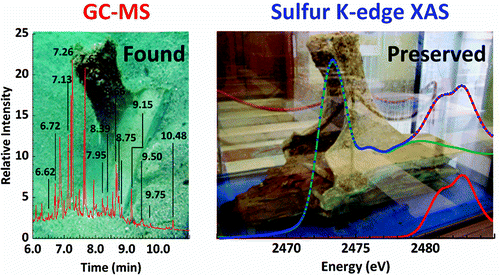New secrets from 'Bay of the Pirates' warship that sunk 2,300 years ago

(Phys.org) -- A recent study puts some finishing touches on the 2,300-year history of the beak-like weapon that an ancient warship used to ram enemy ships in the First Punic War, the conflict between ancient Rome and Carthage. The report, in the journal Analytical Chemistry, also identifies a major threat that conservators must address in preserving this archaeological treasure for future generations.
Patrick Frank, staff scientist at the Stanford Synchrotron Radiation Lightsource, and colleagues explain that the ram, called a rostrum, was found in 2008 under 22 feet of water, 150 feet offshore from Acqualadrone (which means “Bay of the Pirates”) in northeastern Sicily. The Acqualadrone rostrum is bronze, with a wooden core that was preserved because of burial beneath the seafloor.
Carbon-14 dating suggests that the warship sank around 260 B.C. after being damaged in the battle of Mylae during the opening stages of the First Punic War, which may have been among the largest wars of its time. Earlier research localized the metals in the bronze to mines in Spain or Cyprus.
The authors, from SLAC National Accelerator Laboratory and the University of Palermo, set out in the new research to learn more about the origin and condition of the rostrum wood. Their analysis of the acids and other substances in the wood showed that the strutwork of the rostrum was pine, and waterproofed with pine tar. Other woods – like juniper and oak – and other ancient marine sealants (like beeswax) were ruled out.
Importantly, the research found copious sulfur in the wood that could turn into sulfuric acid, an extremely corrosive substance. Sulfuric acid is known to appear in recovered wooden marine archaeological treasures and can threaten their existence. The authors argue that iron and copper permeating the wood may catalyze that transformation, but they suggest that removing ozone from museum air could slow the conversion.
More information: “Ancient Wood of the Acqualadrone Rostrum: Materials History through Gas Chromatography/Mass Spectrometry and Sulfur X-ray Absorption Spectroscopy” Anal. Chem., 2012, 84 (10), pp 4419–4428. DOI: 10.1021/ac3001258
Abstract
In 2008 the rostrum from an ancient warship was recovered from the Mediterranean near Acqualadrone, Sicily. To establish its provenance and condition, samples of black and brown rostrum wood were examined using sulfur K-edge X-ray absorption spectroscopy (XAS) and gas chromatography/mass spectrometry (GC/MS). GC/MS of pyrolytic volatiles yielded only guaiacyl derivatives, indicating construction from pinewood. A derivatized extract of black wood yielded forms of abietic acid and sandaracopimaric acid consistent with pine pitch waterproofing. Numerical fits to the sulfur K-edge XAS spectra showed that about 65% of the endogenous sulfur consisted of thiols and disulfides. Elemental sulfur was about 2% and 7% in black and brown wood, respectively, while pyritic sulfur was about 12% and 6%. About 2% of the sulfur in both wood types was modeled as trimethylsulfonium, possibly reflecting biogenic (dimethylsulfonio)propionate. High-valent sulfur was exclusively represented by sulfate esters, consistent with bacterial sulfotransferase activity. Traces of chloride were detected, but no free sulfate ion. In summary, the rostrum was manufactured of pine wood and subsequently waterproofed with pine pitch. The subsequent 2300 years included battle, foundering, and marine burial followed by anoxia, bacterial colonization, sulfate reduction, and mobilization of transition metals, which produced pyrite and copious appended sulfur functionality.
Journal information: Analytical Chemistry
Provided by American Chemical Society















